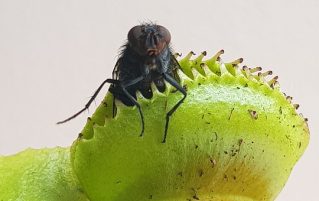

Photosynthesis is an amazing and essential process for life. But it is certainly not the only amazing thing that plants do!
The world is full of fascinating plants which do fascinating things. Vachellia drepanolobium, also known as “whistling thorn”, lives in East Africa and has a strong relationship with ants! By developing long thin spikes, and large bulbous bases which are hollow, they provide a home to many species of ant. Not only that, but the plant secretes a nectar to provide the ant with food – a bed and breakfast for ants!! In return, the ants act as bodyguards, aggressively defending the tree from large herbivores. The wind blowing through all the hole the ants have made to enter the tree, causes the whistling. Scientists believe that this noise may also deter predators!
Plants also communicate with each other. Cabbage plants emit a volatile gas, warning their family members to protect themselves if attacked by insects or other animals. On receiving the danger signal, nearby plants will produce toxic chemicals on their leaves to fend off predators. Some plants, such as corn saplings, also use clicking noises to communicate with each other!
Research even suggests that the Venus flytrap can count – at least up to 5! When an insect lands on the “tongue” of the plant, it brushes against trigger hairs. These send a signal through the stem. However, it is a patient plant, and does not snap shut until 4 or 5 insects have landed. Acidic juices and enzymes start to digest the insects. More movement, results in more juices and more digestion!!
GCSE scientists, you need to be able to describe how to investigate photosynthesis practically, so why not try Part 2 of our “How to work with Photosynthesis” revision guide. This guide follows on from Part 1, and covers how to complete practicals to measure the rate of photosynthesis. It explains what equipment is required, and which variables to control. Instructions on calculating the rate of photosynthesis using the inverse square law is also included.
Click on the picture below to see the guide.
If you found this useful and think you would benefit from some additional help, please contact us.
